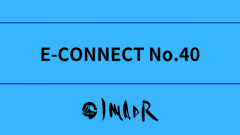Data collection to counter intersecting forms of discrimination against women and girls (HRC36, 2017, OS)
September 25, 2017
IMADR statement on “Data collection to counter intersecting forms of discrimination against women and girls” at the 36th session of the Human Rights Council. Whole text can be read below or downloaded here. ![]()
———
IMADR Oral Statement: 36th session of the Human Rights Council
Panel Discussion on the impact of multiple and intersecting forms of discrimination and violence in the context of racism, racial discrimination, xenophobia and related intolerance on the full enjoyment of all human rights by women and girls
25 September 2017
Speaker: Madeleine Cowper
Thank you Mr. President,
Although the Human Rights Council acknowledged that “many women and girls… are disproportionally affected by aggravated forms of racism, racial discrimination, xenophobia and related intolerance”[1] in its 35th session, we are concerned that we have seen little action to gather information on the affected groups. For example, very little data exists regarding Dalit and Buraku women and girls, groups that have been traditionally discriminated against. Buraku women face stigma when marrying, have little access to employment and encounter healthcare issues.[2] Dalit women are at a higher risk of sexual violence,[3] trafficking[4] and forced marriage[5] but have little legal recourse as they also experience serious difficulties in accessing the formal justice systems[6] and are excluded from political processes.[7]
Discrimination is a truly crosscutting issue and we are deeply concerned by the fact that there has been a significant lack of effort to address intersectional discrimination in a holistic, comprehensive way. The Committee on the Elimination of Racial Discrimination has repeatedly inquired about disaggregated data and stressed its crucial role in combatting discrimination. All governments should account for the situation of women and girls of marginalised communities in all measures taken to address discrimination and explicitly create provisions tailored to ensure their rights whenever possible.[8] The OHCHR can strengthen its role in assisting States in this regard. We would like to ask a question to the panellists: how do you propose that the OHCHR increase coordination of its efforts to ensure a more complete approach to intersectional discrimination?
Thank you Mr. President.
———
[1] A/HRC/35/10 UNGA
[2] “What the survey findings tell us: Buraku Women” in Minority Women Rise Up: A Collaborative Survey on Ainu, Buraku and Korean Women in Japan (IMADR, 2004), sect. 1.2.
[3] See A/HRC/26/38/Add.1, para. 15, and A/HRC/26/38/Add.2, para. 16. “Dalit women speak out, violence against Dalit women in India” (National Campaign on Dalit Human Rights, 2006), pp. 3-4.
[4] See A/HRC/26/38/Add.1, para. 28.
[5] See A/HRC/29/40, para. 23.
[6] Minority Rights Group International, written contribution to the general discussion on access to justice at the fifty-fourth session of the Committee on the Elimination of Discrimination against Women (2013).
[7] Navsarjan Trust and others, “The situation of Dalit rural women”, submission to the general discussion on rural women of the Committee on the Elimination of Discrimination against Women (2013), p. 3.
[8] https://idsn.org/uploads/media/UN_Principles_And_Guidelines_-_IDSN.pdf
Related Content

Newsletter E-CONNECT No.40 is out

Newsletter E-CONNECT No.39 is out

Newsletter E-CONNECT No.38 is out


